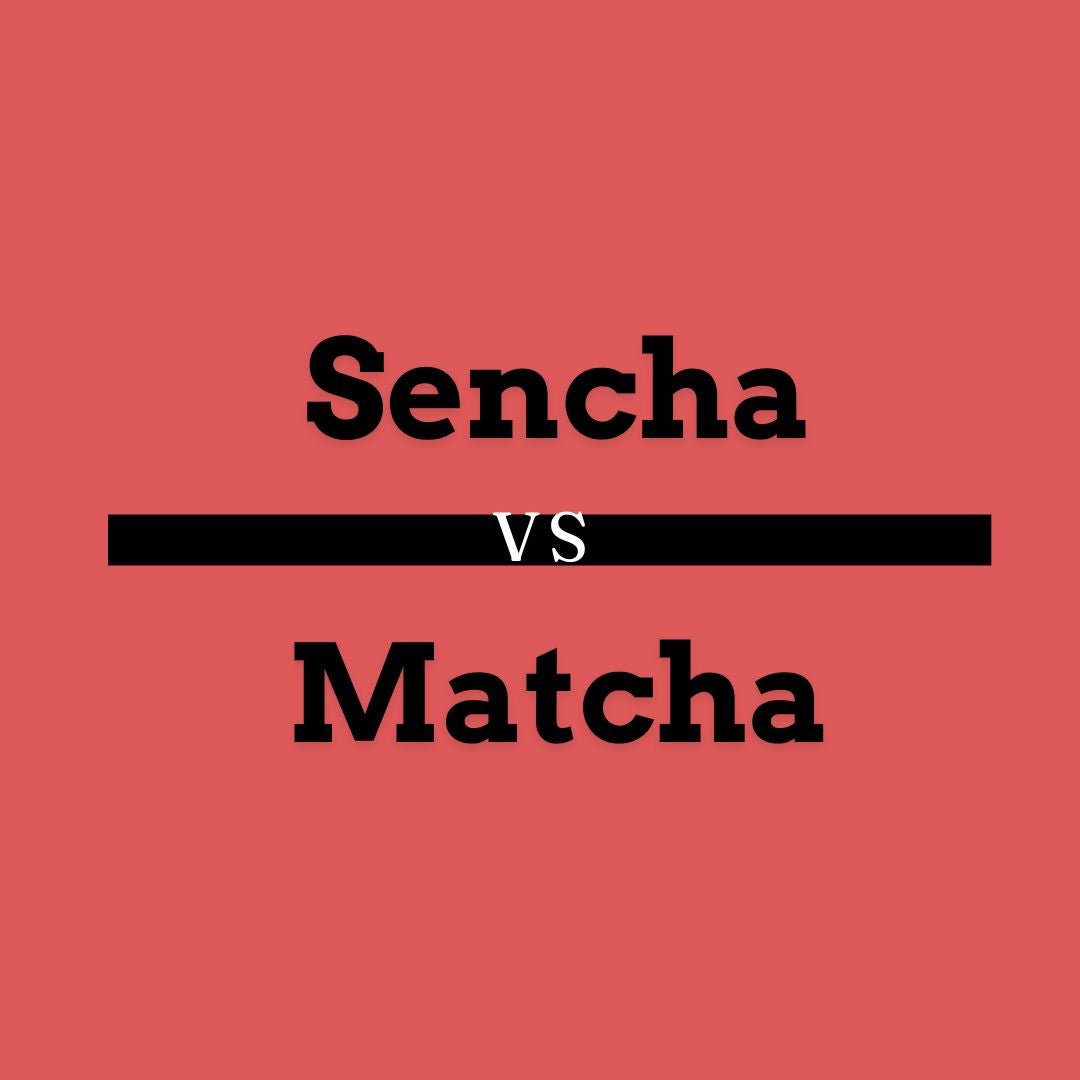Hey there, tea lovers! Ever found yourself standing in the tea aisle, staring at a box of sencha and a tin of matcha, wondering what the difference is? You’re not alone! Both are popular green teas from Japan, but they’re actually quite distinct in how they’re grown, prepared, and enjoyed. So, if you’re ready to dive into the world of Japanese green tea, let’s explore the key differences between sencha and matcha. Grab your favorite mug, and let’s get started!
What is sencha?
Sencha is one of Japan’s most popular green teas, making up a large part of the country’s tea production. It's known for its fresh, grassy flavor and light, golden-green hue.

How it’s grown:
Sencha is grown in full sunlight. The leaves are harvested and then steamed to stop oxidation, which keeps their vibrant green color and fresh taste. Since sencha is sun-grown, it tends to have a slightly more astringent, refreshing flavor, thanks to its higher catechin content (those are the antioxidants you often hear about in green tea).
How it’s made:
Sencha leaves are typically rolled into needle-like shapes after steaming, dried, and then packaged. When you brew sencha, you're infusing the whole leaves in hot water. The result? A light, delicate flavor with just the right amount of bitterness and sweetness.
The taste:
Sencha’s flavor is clean and bright, often described as grassy or vegetal. It has a natural sweetness with a bit of astringency, which gives it a refreshing finish. Perfect for sipping in the afternoon when you need a gentle pick-me-up!
What is matcha?
Matcha, on the other hand, is a powdered green tea that has taken the world by storm in recent years. It’s got a bold flavor and an intense, rich green color.

How it’s grown:
Unlike sencha, matcha is shade-grown. About three weeks before harvest, the tea plants are covered to block out most sunlight. This process increases the production of chlorophyll and amino acids, giving matcha its deep green color and smooth, umami flavor.
How it’s made:
Once the leaves are harvested, they’re steamed and then dried. But here’s the big difference: instead of rolling the leaves like sencha, the stems and veins are removed, and the leaves are stone-ground into a fine powder. When you drink matcha, you're consuming the whole tea leaf, which is why it’s packed with nutrients and gives you a much more concentrated green tea experience.
The taste:
Matcha has a bold, earthy flavor with a hint of sweetness and a creamy finish. It’s rich and smooth, often described as having a “umami” taste (that savory, mouth-watering flavor that’s hard to describe but so satisfying). Matcha’s intensity makes it ideal for those who want a stronger green tea experience—or for making lattes and smoothies!
Key differences between sencha and matcha
Alright, now that we’ve covered the basics, let’s get into the key differences between sencha and matcha:
1. Form:
- Sencha: Loose leaf tea that you brew in water.
- Matcha: Powdered tea that you whisk into water (or milk for lattes).
2. Growing process:
- Sencha: Grown in full sunlight.
- Matcha: Shade-grown for the last few weeks before harvest.
3. Preparation:
- Sencha: You steep the leaves, then discard them.
- Matcha: You whisk the powder into your drink and consume the entire leaf.
4. Flavor:
- Sencha: Light, refreshing, grassy, with a hint of sweetness and bitterness.
- Matcha: Bold, earthy, and rich, with a creamy, umami flavor.
5. Nutrient content:
Because you consume the whole leaf with matcha, it’s typically higher in antioxidants, vitamins, and minerals compared to sencha. Matcha also contains more caffeine, so it provides a stronger energy boost.
When should you choose sencha or matcha?
Both sencha and matcha have their unique qualities, so it really depends on what you’re in the mood for!
- If you want a light, refreshing tea to sip throughout the day, go for sencha. It’s lower in caffeine, so it’s perfect for a midday or afternoon tea break.
- If you need an energy boost or want something rich and indulgent, matcha is your best bet. Whether you whisk it into a cup of hot water or blend it into a matcha latte, it’s a great option for mornings or when you need to stay focused.
Final thoughts: sencha or matcha—which one’s for you?
At the end of the day, whether you choose sencha or matcha comes down to personal preference. Both are packed with health benefits, loaded with antioxidants, and have their own distinct flavors. If you’re a fan of light, grassy teas, sencha is for you. If you’re into something bolder and creamier, matcha might just be your new favorite.
So, next time you’re in the tea aisle, you’ll know exactly what sets these two teas apart. And hey, why not try both? After all, there’s no such thing as too much tea!
Happy sipping, tea lovers!




